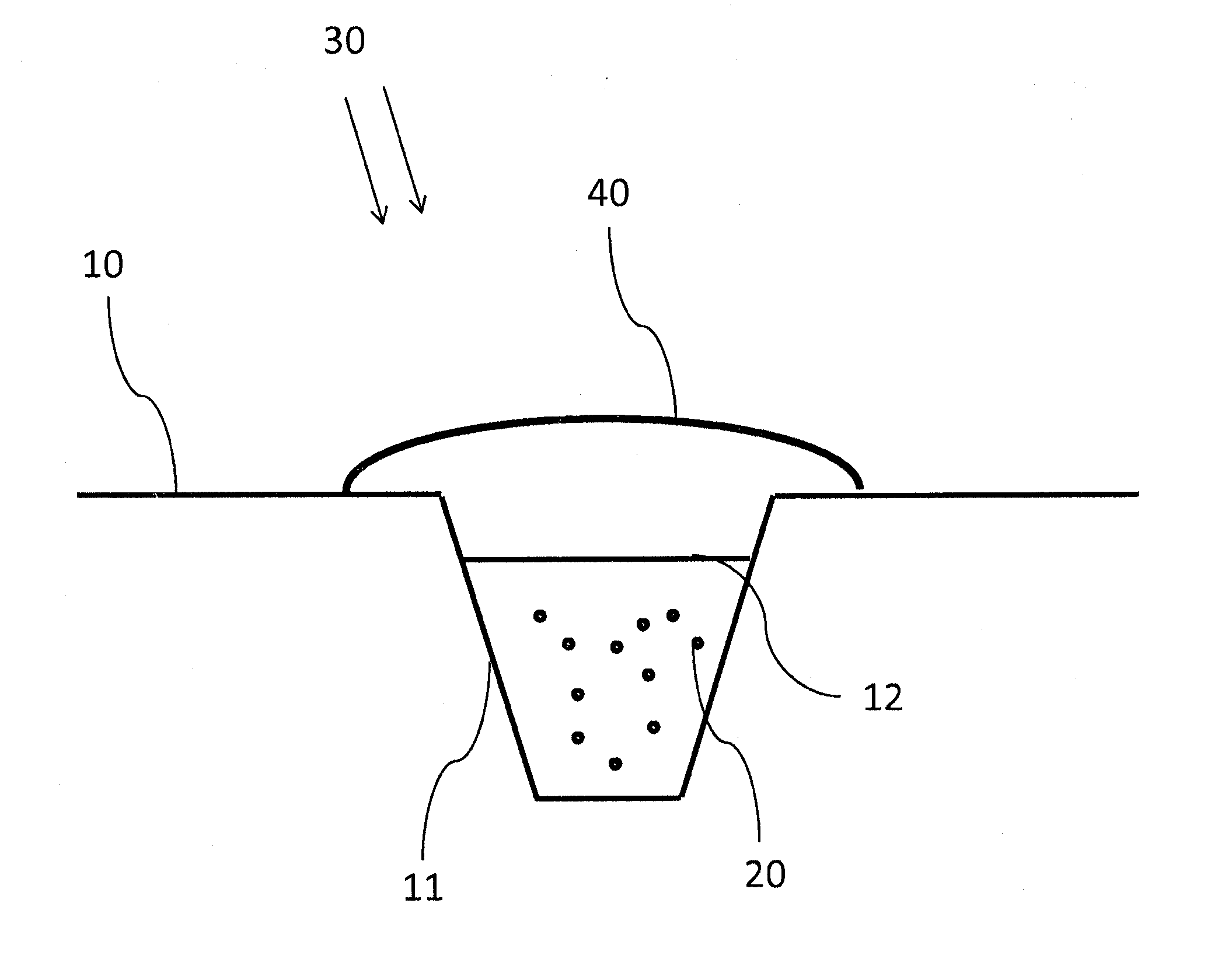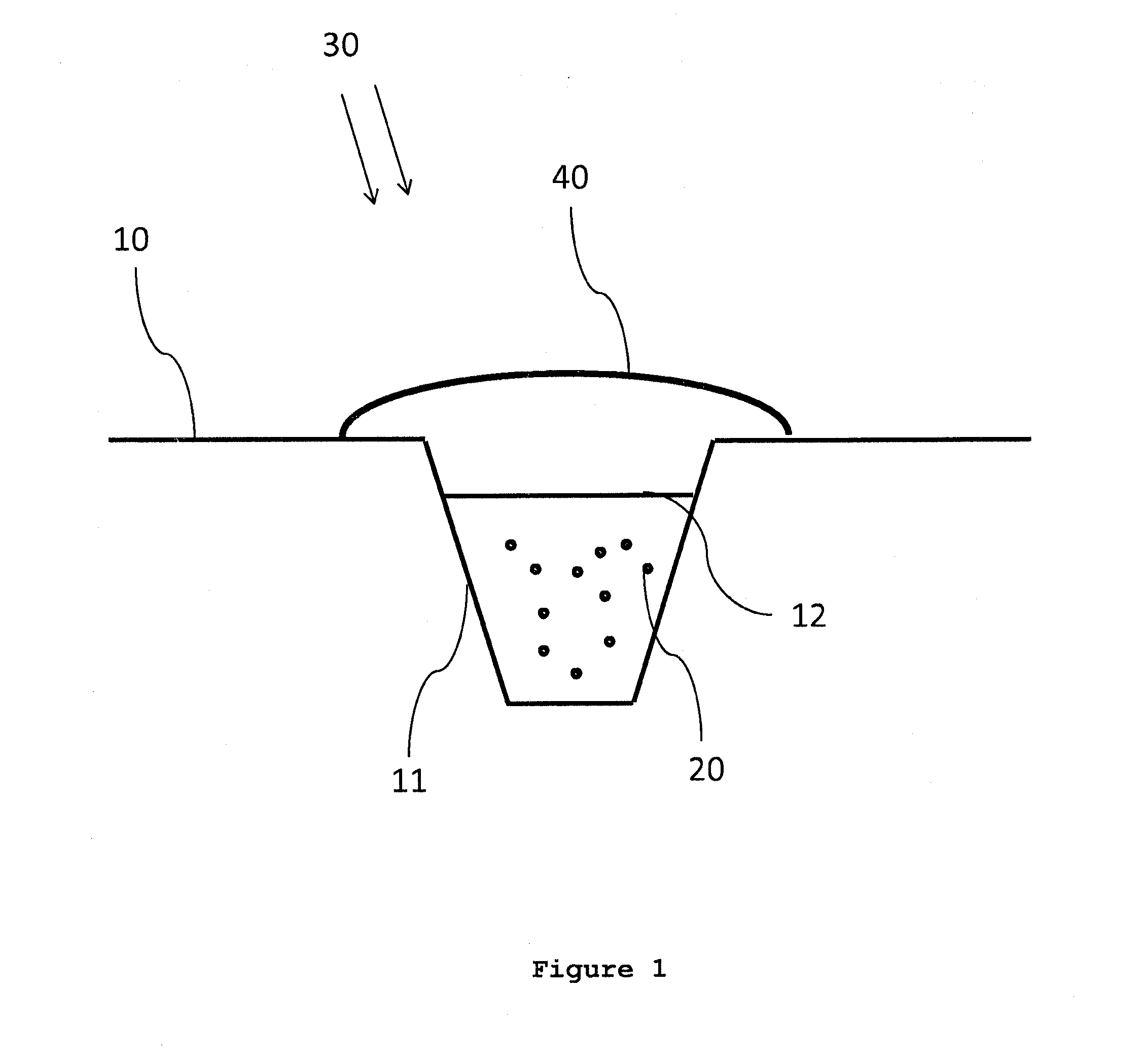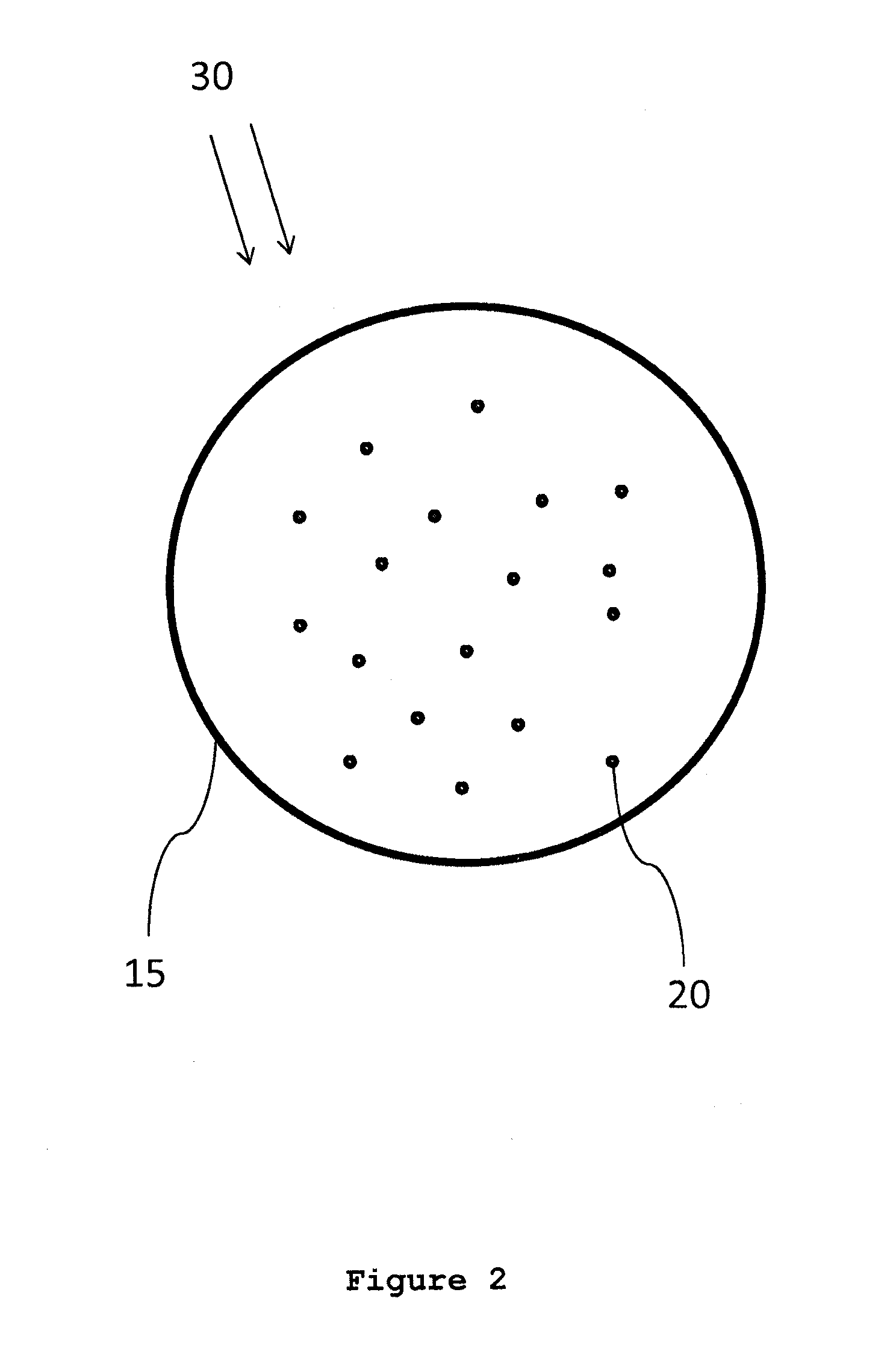Method and device for culturing algae
a cultivation method and algae technology, applied in algae products, biochemistry apparatuses, biochemistry apparatuses and processes, etc., can solve the problems of inability to substitute the heterotrophic approach, the cost of this approach is prohibitive, and the environmental balance is very imperfect, so as to promote algae growth, limit the photoinhibition phenomenon, and limit the exposure of algae
- Summary
- Abstract
- Description
- Claims
- Application Information
AI Technical Summary
Benefits of technology
Problems solved by technology
Method used
Image
Examples
example 1
Tubular Photobioreactors
[0105]Algae are cultivated in a device containing a network of plastic tubes whose diameter is comprised between 5 and 20 cm and whose total length can reach several km. A side view of part of the device is shown schematically on FIG. 2.? Algae 20 are set to culture within a tubular photobioreactor illuminated by natural light 30. The wall 15 if the photobioreactor receives natural light and is composed of a material that contains at least one luminescent compound allowing the reemission of radiation whose spectrum is adapted to algae. The device integrates pumps and a system to inject concentrated carbon dioxide. The tube plastics is doped, before extrusion, by a combination of luminescent compounds chosen in order to modify sunlight depending on the physiological needs of the algae species considered, as previously determined experimentally. Polymethylmethacrylate (PMMA) is an example of acrylic plastics that offers excellent optical properties and allows a...
example 2
Bags
[0110]A cheaper solution to cultivate algae consists in using bags. Said bags can be set in open air, in a closed area, or let floating on the sea (preferentially, semi-permeable bags that let water go out and exchange nutrients with sea water are used). The plastic bags can be made of a polymer such as polyethylene-ethylene vinyl acetate (PE-EVA), Apoliah (Arkema) or PMMA. The thickness of the bags is comprised between 100 μm and 500 μm. The plastic is doped, before extrusion, with a combination of luminescent compounds chosen in order to modify sunlight based on the physiological needs of the algae species considered, as previously determined experimentally.
example 3
Shelters
[0111]The whole algae cultivation device, which can integrate tubes, parallelepiped volumes or panels, is integrated within a “shelter”-type structure, which can be closed or semi-closed and plays a positive role in terms of thermal regulation, light regulation, protection from parasites, predators or adverse weather. The greenhouse walls are composed of glass whose internal face has been coated with a resin doped by a combination of luminescent compounds chosen in order to modify sunlight according to the physiological needs of the algae species considered, as previously determined experimentally. Alternatively, coated glass can be replaced by PMMA plates.
PUM
| Property | Measurement | Unit |
|---|---|---|
| solar radiation | aaaaa | aaaaa |
| flexible | aaaaa | aaaaa |
| transparent | aaaaa | aaaaa |
Abstract
Description
Claims
Application Information
 Login to View More
Login to View More - R&D
- Intellectual Property
- Life Sciences
- Materials
- Tech Scout
- Unparalleled Data Quality
- Higher Quality Content
- 60% Fewer Hallucinations
Browse by: Latest US Patents, China's latest patents, Technical Efficacy Thesaurus, Application Domain, Technology Topic, Popular Technical Reports.
© 2025 PatSnap. All rights reserved.Legal|Privacy policy|Modern Slavery Act Transparency Statement|Sitemap|About US| Contact US: help@patsnap.com



